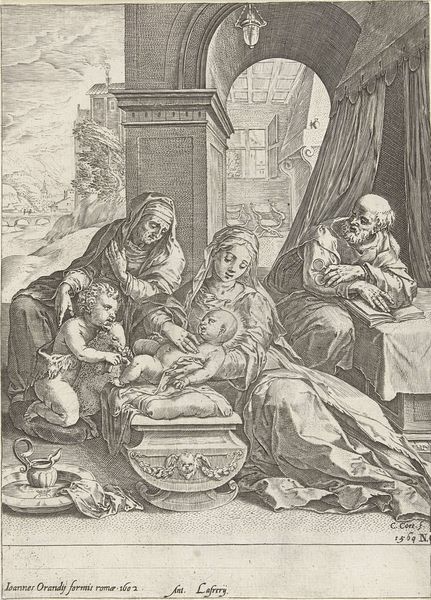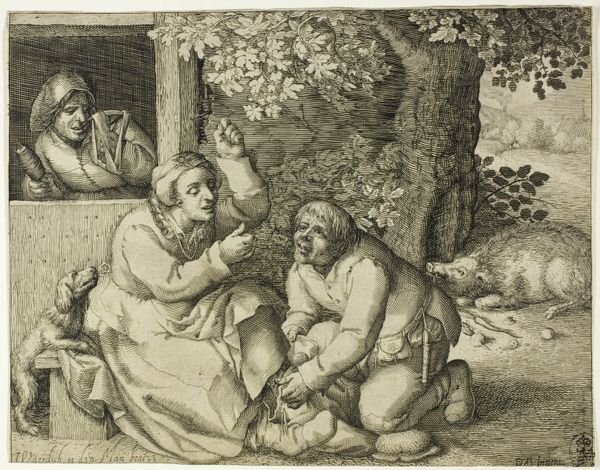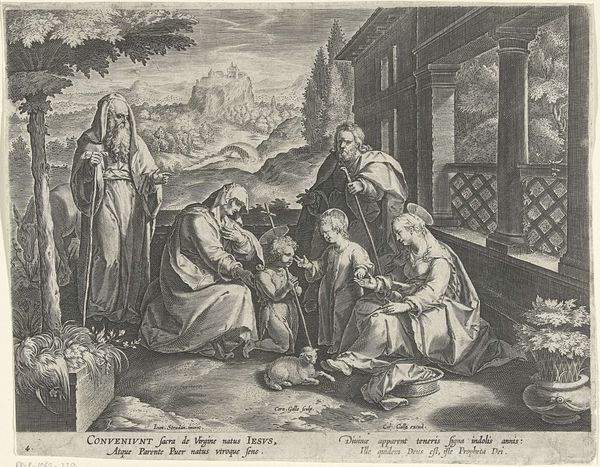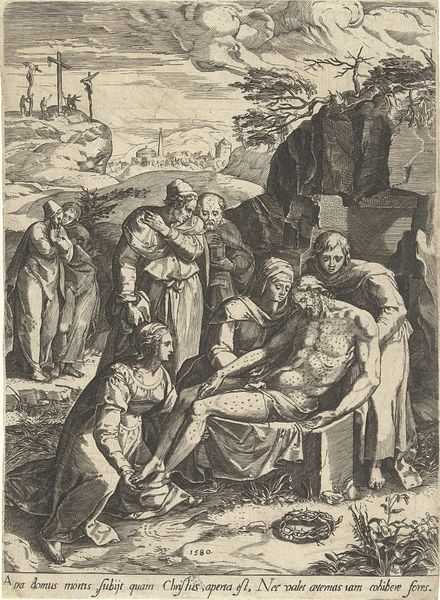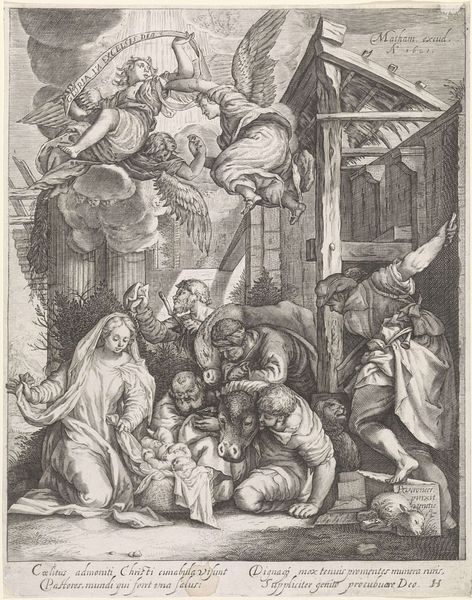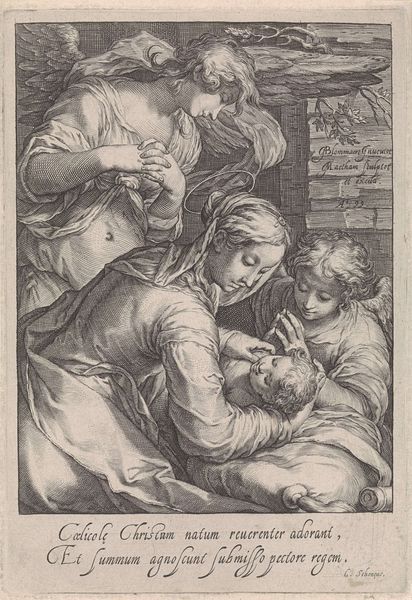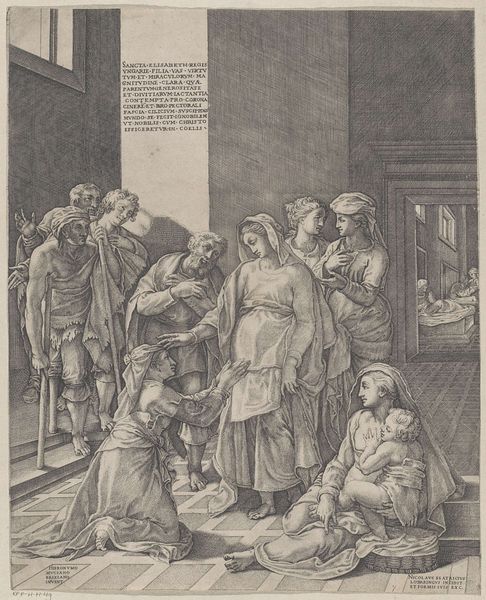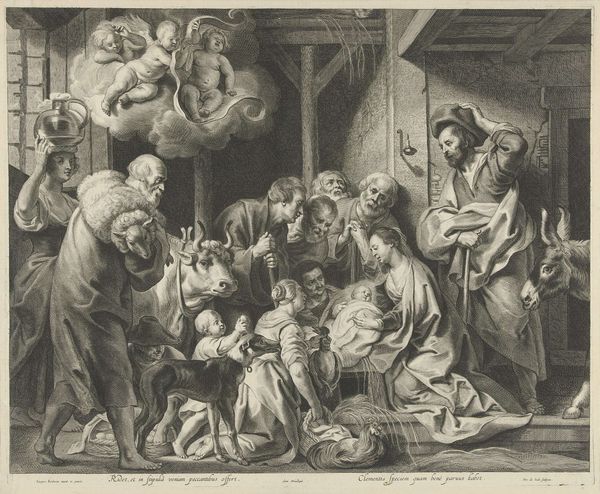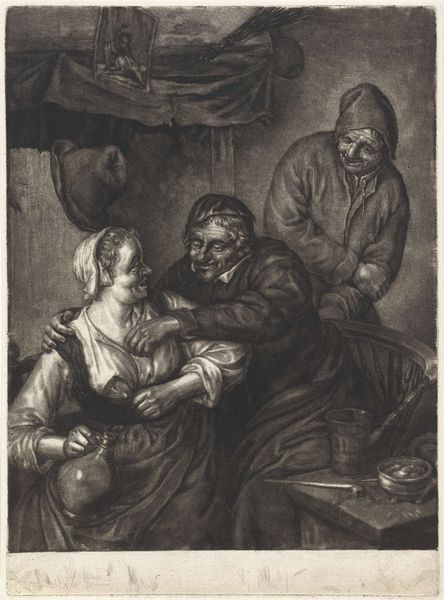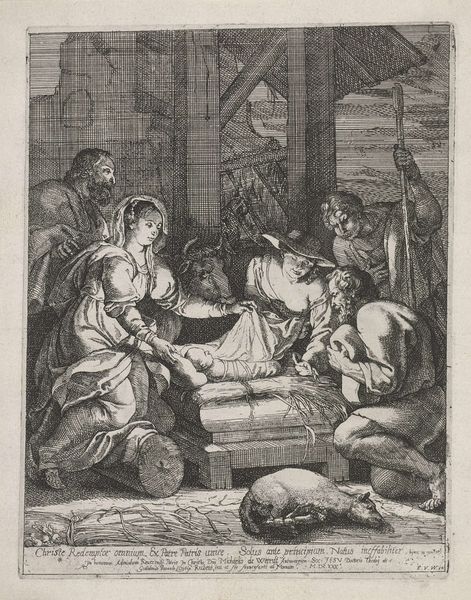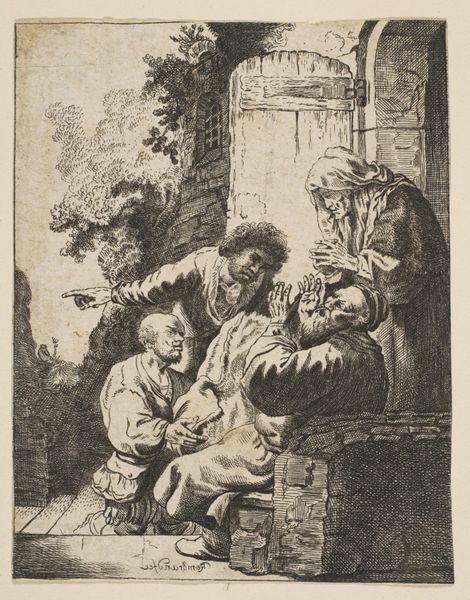
print, engraving
#
portrait
#
pencil drawn
# print
#
pencil sketch
#
charcoal drawing
#
figuration
#
charcoal art
#
pencil drawing
#
pen-ink sketch
#
portrait drawing
#
history-painting
#
northern-renaissance
#
engraving
Dimensions: height 202 mm, width 157 mm
Copyright: Rijks Museum: Open Domain
Curator: This print, titled "Heilige Familie met Elisabet en Johannes de Doper," or "The Holy Family with Elizabeth and John the Baptist," was created sometime between 1550 and 1625 by Pieter Jalhea Furnius. Editor: It's a scene imbued with a gentle melancholy. The intricate linework, all in tones of gray, seems to cradle the figures in a soft, contemplative mood. Curator: Yes, the scene depicts Mary, Joseph, Elizabeth, and the infants Jesus and John. Let's consider how images like this worked within Reformation era. The composition, dense with figures, would be recognized within religious teaching. Notice how the Christ-child is presented, and what that detail offers within cultural interpretations. Editor: I’m particularly drawn to the lamb nestled between Elizabeth and Jesus, a clear symbol of Christ’s sacrifice and innocence. And the cross that John carries...both serve as powerful indicators of the children's future destinies. Curator: It’s important to note the gender dynamics presented here. The central role of Mary and Elizabeth, and what is culturally acceptable is carefully presented through specific poses, which are representative of cultural norms related to devotion, love, and motherhood. The work then invites us to unpack the dynamics related to these socially sanctioned roles. Editor: Absolutely. Also, Joseph’s placement seems almost peripheral; physically present, but emotionally distant, gazing reflectively into the distance. This echoes, for me, broader societal attitudes around masculine participation within family structures, even within a divine context. Curator: That’s an interesting insight. These compositions provided frameworks for thinking about faith, morality, and, importantly, family structures, and were tied directly to class, race, and gender at that historical moment. Editor: Thinking about these relationships as expressions of power, how have the messages communicated been used within larger narratives to justify particular worldviews, or perhaps enforce gendered dynamics? Curator: Images such as these also invite us to critique our current assumptions regarding class and family structures. To further engage critically in our historical moment as well. Editor: So true! The work prompts reflections that reach beyond devotional practice to challenge the basis for family relations through different generations. Curator: Ultimately, the narratives continue to resonate and push beyond. Editor: Yes, as we allow the imagery to permeate beyond first glances.
Comments
No comments
Be the first to comment and join the conversation on the ultimate creative platform.
